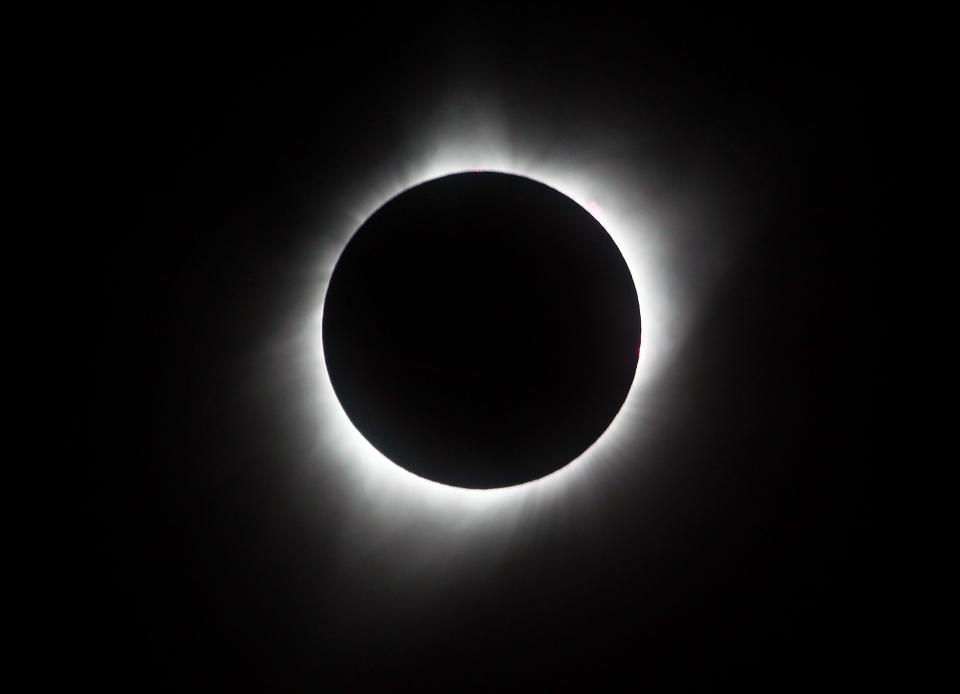Why is this solar eclipse such a big deal? What to know about the rare event
Is the total solar eclipse coming this April really that big of a deal?
The celestial event is causing thousands, maybe millions, to plan trips to witness it. States in the path of totality are planning for hours of backed-up traffic and potential shortages.
Oklahoma is expected to receive an influx of visitors anywhere from 17,000 to 66,000. The swarm of tourists to the state could impose traffic, delays in supply chains and decreased cellular service quality, according to the Oklahoma Department of Emergency Management.
But why is it causing such a stir? What makes this eclipse more significant than others?
Total solar eclipse vs. other types of eclipses

Eclipses happen all the time, right? But each one is different.
A total solar eclipse is more impressive than a lunar or an annular solar eclipse.
During an annular eclipse, the moon covers the Sun but is further away from the Earth than during a total eclipse. Because of its distance, it leaves a "ring of fire," darkening the sky instead of plunging the Earth into a night-like darkness.
A lunar eclipse happens when the moon passes into the Earth's shadow, causing the appearance of a red moon.
When is the next total solar eclipse in the US?
Total solar eclipses are rare, with the next one visible in the US not for another 20 years. The path of totality for the 2044 total solar eclipse will only pass through three states: Montana, North Dakota and South Dakota.
Total solar eclipses with such a wide-reaching audience are even more rare, but much of the US is in luck as the next year, 2045, will bring another total solar eclipse. That time, fifteen states will be in the path of totality, including a much larger portion of Oklahoma.
Solar eclipses can only happen during a new moon, according to the National Weather Service.
Millions are in the path of totality
NASA estimates 215 million adults in the U.S. saw the 2017 solar eclipse either in person or electronically and even more people will likely see April's eclipse.
The eclipse's path of totality will pass over cities like Dallas, Cleveland and Buffalo, New York. And those places will attract skygazers from all over the country.
Searches for short-term Airbnb rentals around those areas have surged. Transportation officials in areas along the path of totality are warning residents and travelers that the eclipse could create dangerous and busy traffic conditions on roads around places with the best view.
This article originally appeared on Oklahoman: Why is this eclipse such a big deal? When is the next solar eclipse?

